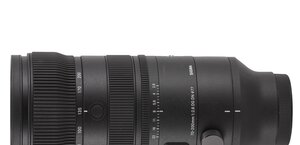Carl Zeiss Otus 28 mm f/1.4
3. Build quality
The photo below emphasizes the dimensions of the Otus – next to the Zeiss the Sigma A 1.4/35, hardly a midget after all, looks like something small and handy and the Macro-Planar 2/50, positioned on the other side, seems to be positively filigree.
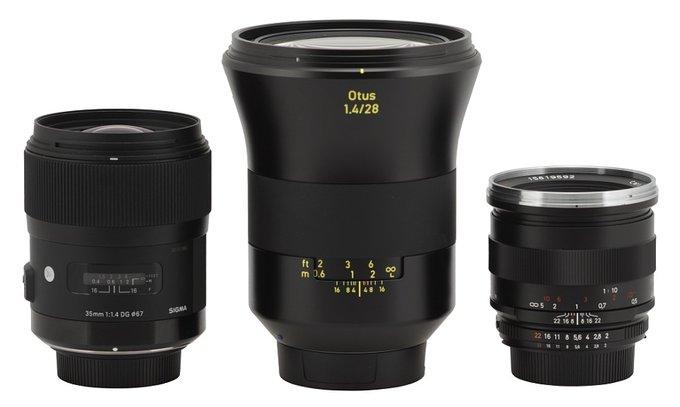 |
Please Support UsIf you enjoy our reviews and articles, and you want us to continue our work please, support our website by donating through PayPal. The funds are going to be used for paying our editorial team, renting servers, and equipping our testing studio; only that way we will be able to continue providing you interesting content for free. |
- - - - - - - - - - - - - - - - - - - - - - - - - - - - - - - - - - - - - - - - - - - - - - - -
The tested lens starts with a metal mount which goes round a contact plate and a rear element, 30 mm in diameter. That element is situated on the same level as the contacts with the focus set at infinity; when you pass to the minimum focusing distance it hides inside the barrel about 0.5 of a centimetre deep. While doing so it doesn’t reveal any mechanic parts of the interior of the tube.
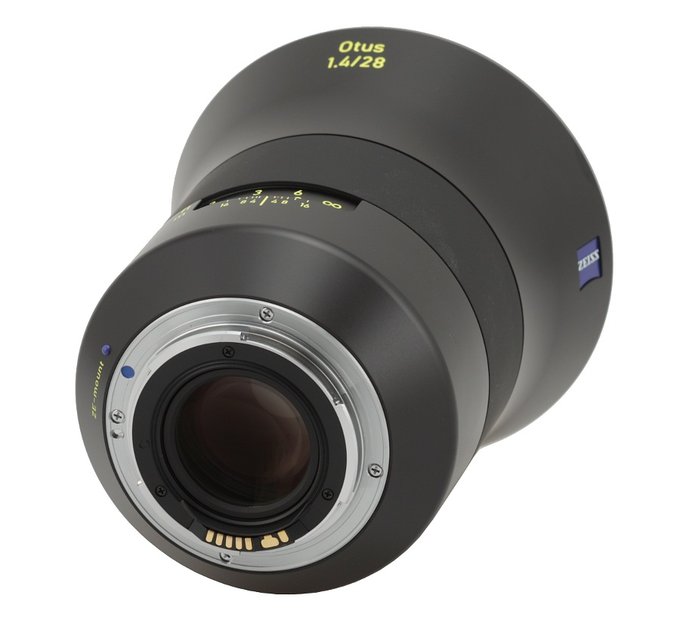 |
The first part of the proper body of the lens ( in the ZF.2 version) is an aperture ring. The Canon version lacks that ring because the aperture can be controlled in the camera. The metal casing quickly increases its diameter – in this part of the lens there is just a blue dot, making an alignment with a camera easier, mount version markings, parameters of the lens, its serial number and information that it was produced in Japan.
Then on the smooth barrel you see a depth of field scale with marks ranging from f/16 to f/2.8 (but only those by f/16, f/8 and f/4 are signed). Above it there is a distance scale expressed in feet and meters.
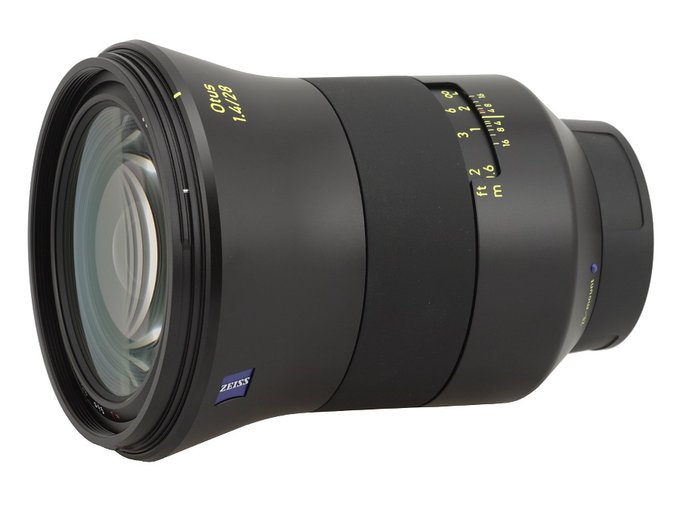 |
Further on there is a manual focus ring, 31 mm wide, completely covered by a smooth rubber armour. The rubber sticks to your fingers very well ensuring a firm grip but it gets dirty easily as well. The working range of the ring amounts to 120 degrees which is a typical value for those optical parameters. The usage of the focus ring is comfortable indeed – you get a perfect grip, smoothness and utter focusing precision but, as far as I am concerned, the ring is too light in action; there could be a tad more resistance.
A big, immobile, metal ring, getting wider after a while, is the next part of the lens. It features the name and parameters of the lens along with the logo of the producer and it turns smoothly into a hood mount.
The front element of the lens is 73 mm in diameter and it doesn’t move. Around it you see a ring with an inscription “ZEISS” and “Apo Distagon 1.4/28 ⌀95 T*” and a non-rotating filter thread with a huge diameter of 95 mm.
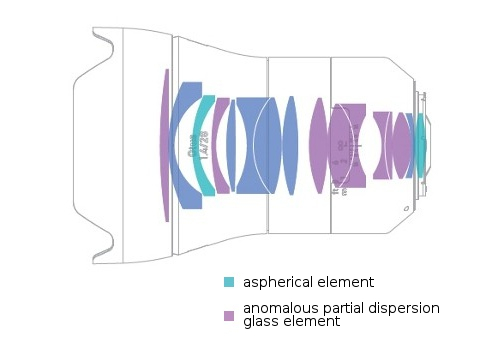 |
The optical formula is 16 elements in 13 groups. There are two aspherical elements among them and eight elements are made with anomalous partial dispersion glass. Inside there is also a round aperture with nine blades which can be closed down to f/16. You also shouldn’t forget about the anti-reflection T* coatings which cover every air-to-glass surface and are supposed to ensure high contrast and lack of problems during the work against bright light.
Buyers get both caps and a metal hood in the box with the lens. It’s a pity the producer didn’t add a stylish pouch of a sort or even a good quality lens case. With such a price and build quality it would be not only justified but also desirable.
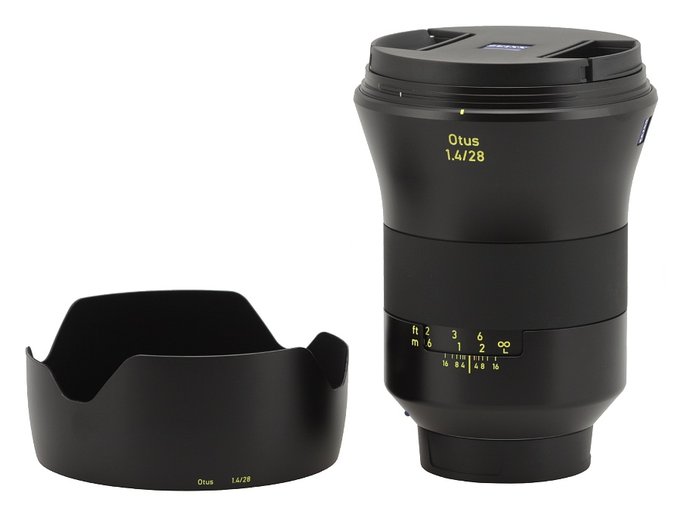 |




